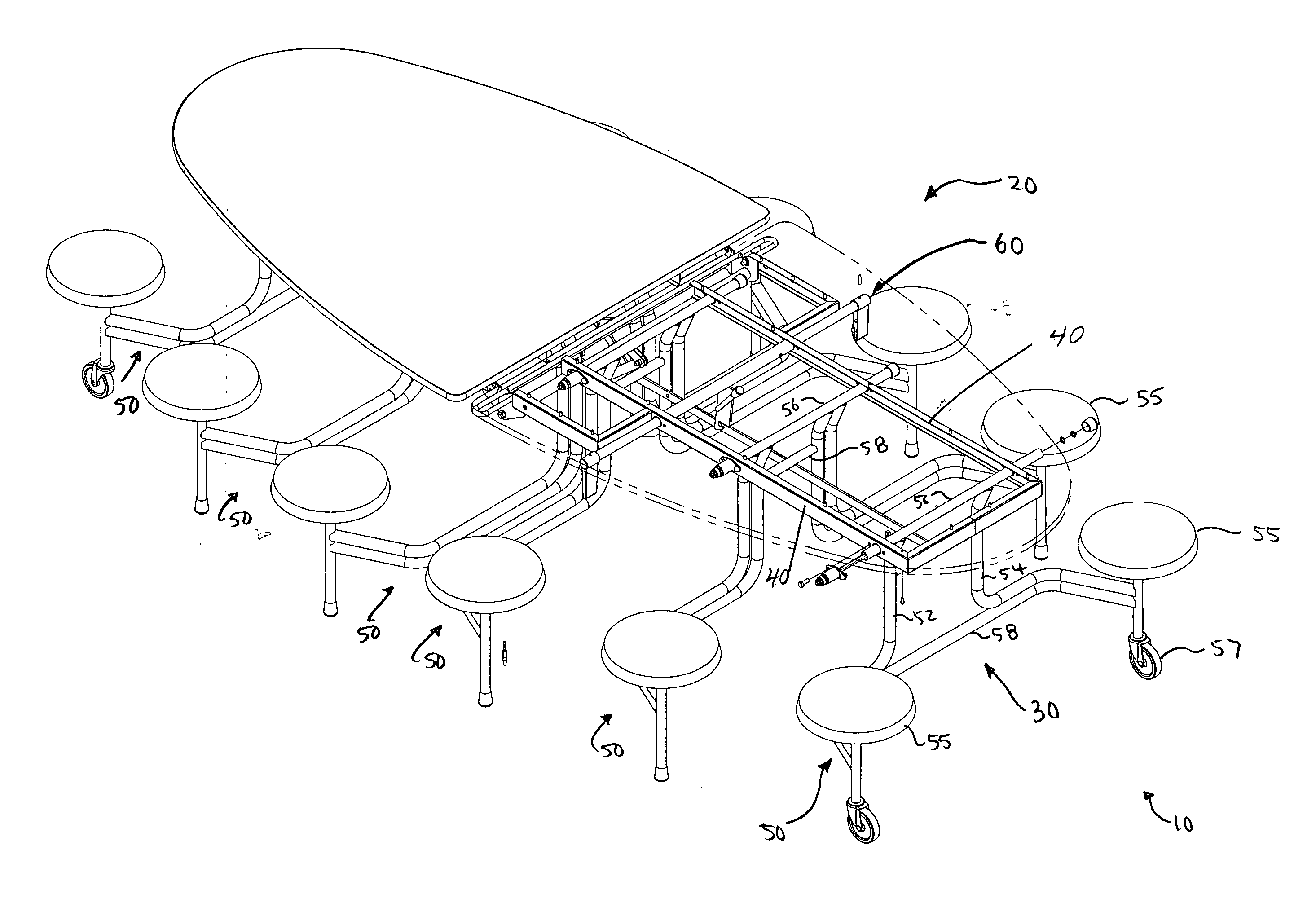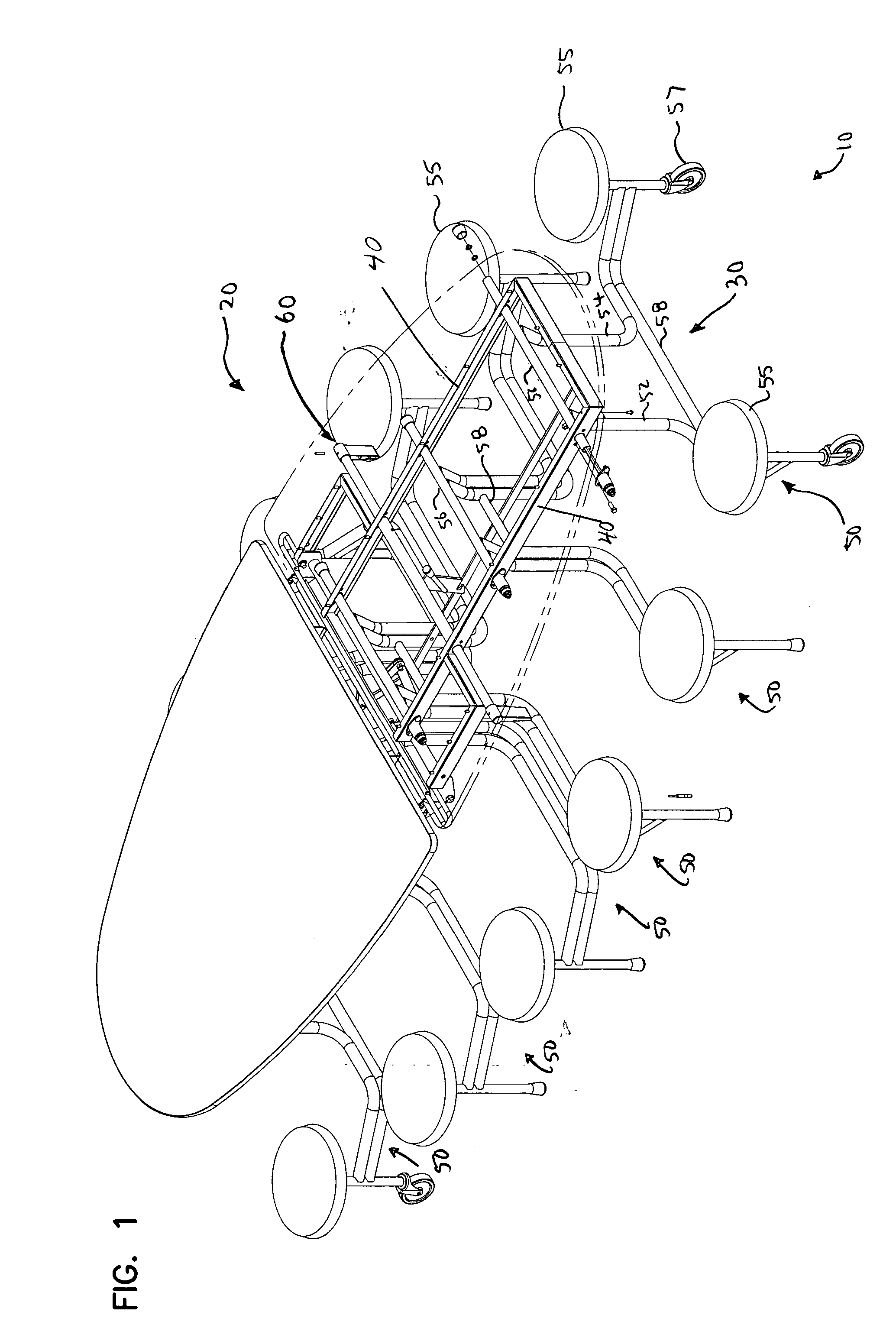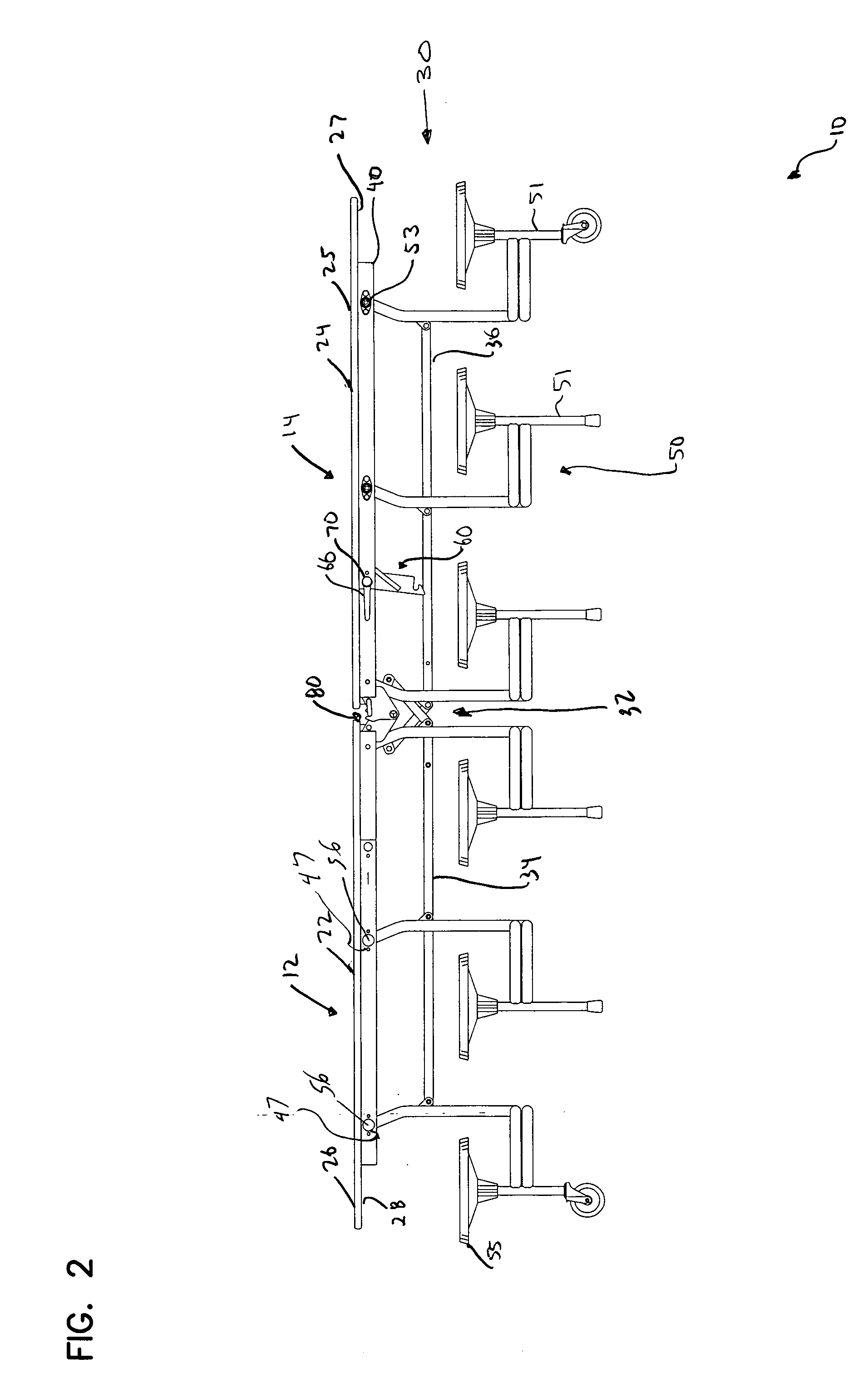Folding table
a folding table and folding technology, applied in the field of folding tables, can solve problems such as becoming vertically unstable, and achieve the effect of making the folding table more difficult to ship
- Summary
- Abstract
- Description
- Claims
- Application Information
AI Technical Summary
Benefits of technology
Problems solved by technology
Method used
Image
Examples
Embodiment Construction
[0024] Referring now to the drawings, and in particular, FIG. 1 a folding table 10 is shown in a use position. The folding table 10 includes a pair of opposed tabletop sections 20 with a foldable table supporting structure 30. The foldable table support structure 30 includes a plurality of mounting rails 40, that preferably mount to the underside of the tabletop sections 20, a plurality of table legs 50 pivotally attached to the plurality of mounting rails 40, and a storage lock assembly 60 that locks the table support structure 30 in the storage position when the mounting rails are brought into the storage position.
[0025] It should be appreciated that the term “folding linkage” as used in this application collectively refers to the set of structural members of the table support structure 30 that are pivotally connected to other structural members including, for example, the table legs 50 discussed below. It should also be appreciated that the term “framework” as used in this appli...
PUM
 Login to view more
Login to view more Abstract
Description
Claims
Application Information
 Login to view more
Login to view more - R&D Engineer
- R&D Manager
- IP Professional
- Industry Leading Data Capabilities
- Powerful AI technology
- Patent DNA Extraction
Browse by: Latest US Patents, China's latest patents, Technical Efficacy Thesaurus, Application Domain, Technology Topic.
© 2024 PatSnap. All rights reserved.Legal|Privacy policy|Modern Slavery Act Transparency Statement|Sitemap



